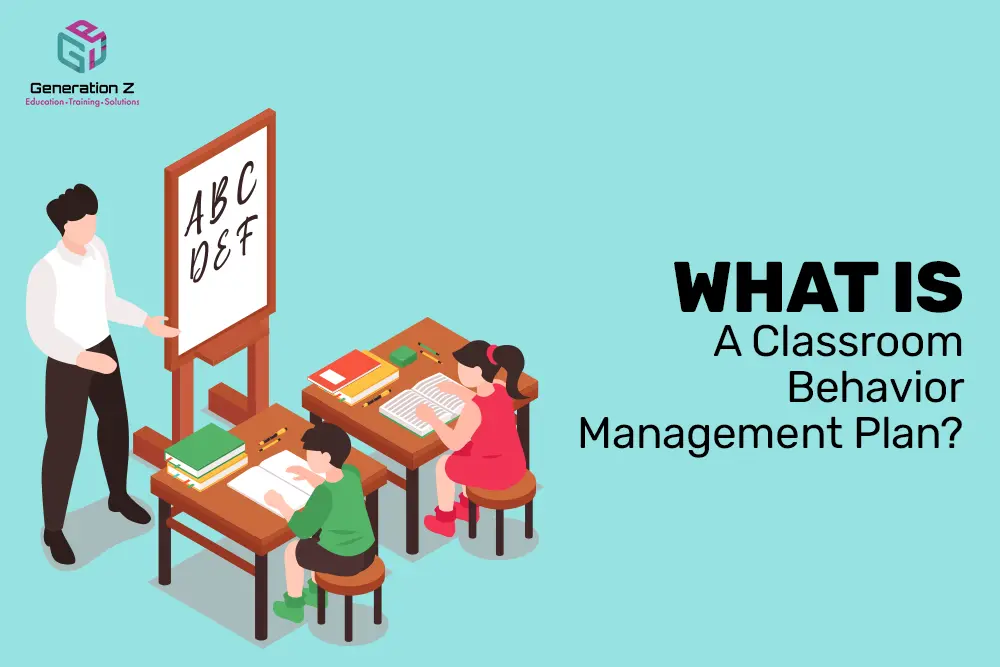In the education field, creating a nurturing and consistent classroom behavior management system has become increasingly important. As a result, almost every successful teacher recognizes the value of having a strategic, effective behavior management course. Teachers continuously address diverse student needs and evolving classroom dynamics. These plans guide students respectfully toward positive choices and help reduce disruptions. Additionally, a structured system promotes fairness and consistency, which can build trust and encourage cooperation among students.
Undeniably, the goal of the classroom behavior system is not punishment. Inrather, it places more emphasis on proactiveness, predictability, and positive reinforcement. With that in mind, let us thoroughly explore the concept, evaluate its key elements, and identify how teachers can implement effective systems that support long-term student success, all while ensuring that learning continues smoothly.
What is a Classroom Behavior Management Plan?
A classroom behavior management plan is a well-organized framework that outlines the strategies, rules, routines, and consequences teachers use to promote appropriate student behavior. In essence, it facilitates the development of a classroom culture based on accountability, respect, and consistency. Having such a plan is not only beneficial in maintaining discipline, but it also encourages students to become self-regulated learners.
Teachers who undertake a behavior management course understand that effective classroom plans are proactive rather than reactive. Instead of waiting for conflicts to arise, professional educators implement strategies learned through behaviour management training to prevent misbehavior. Consequently, their classrooms are transformed into constructive, collaborative spaces where students feel safe, confident, and motivated.
Core Components of a Classroom Behavior Management Plan
To truly understand classroom behavior management, it is necessary to examine its foundational components. Each of these parts works together to support the smooth operation of any classroom environment.
1. Clear Rules and Expectations
At the heart of every classroom management system lies a well-defined set of rules. While simple, these expectations must be communicated clearly, frequently, and consistently. It should be clear to students what conduct is appropriate and inappropriate. Besides, rules ought to be phrased positively when possible, such as “Raise your hand before speaking” rather than “Do not shout.”
2. Behavioral Routines
Transitions are smoother when practiced routines are embedded into daily classroom life. A teacher with strong classroom behavior management ensures that strategies are practiced often so students know exactly what to do when entering class, submitting assignments, or taking part in discussions. Such practiced processes reduce confusion and mayhem.
3. Consequences and Rewards
While rules set the stage, consequences support accountability. However, these consequences should be fair, consistent, and age-appropriate. However, incentives can have a significant impact on student motivation. Every effective classroom management plan balances corrective actions with recognition for positive behavior.
4. Communication Strategies
Strong communication is a pillar of any effective classroom behavior management system. Teachers benefit from behaviour management training that shows them how to communicate expectations clearly, not just to students but also to parents, support staff, and administrators. As a result, everyone is in agreement and ready to uphold classroom rules.
Why Teachers Need Classroom Behavior Management Skills
Implementing an impactful classroom management plan is not always intuitive. Although many teachers possess natural authority and empathy, knowing exactly how to manage disruptive behavior requires specialized knowledge. Accordingly, enrolling in a behavior management course has become a valuable investment for educators.
1. Reducing Stress and Burnout
Research frequently shows that teachers experience burnout when they lack control over student behavior. With effective classroom management, stress levels are significantly reduced because challenges are handled with structured responses learned during behaviour management training.
2. Enhancing Student Engagement
Effective classroom management maximizes learning time and reduces distractions to keep students focused. Teachers who promote consistent classroom behavior management build environments where students feel empowered to participate.
3. Developing Long-Term Classroom Harmony
Through behaviour management training, teachers learn how to build classrooms that thrive over time, not just within one lesson but across the entire school year. Classroom relationships improve, conflicts decline, and learning outcomes rise.
Steps to Building an Effective Classroom Behavior Management Plan
Teachers can begin crafting an effective classroom behavior management plan by following these essential steps:
Step 1: Define Your Behavioral Vision
Determine what type of classroom culture you want. Are you aiming for one that values collaboration, respect, independence, or creativity? Your vision influences every other decision.
Step 2: Set Rules and Procedures
Develop 4–6 core rules that students can remember. Then design routines covering everyday classroom actions. Both must align with your overall classroom behavior management goals.
Step 3: Determine Consequences and Rewards
Consistently enforce consequences while celebrating positive behaviors. Use systems such as points, badges, or praise to encourage desired habits.
Step 4: Communicate Expectations
Share your classroom management plan with students on day one. Also, send copies to parents so that expectations are reinforced at home.
Step 5: Evaluate and Adapt
What works at the start of the year may not remain effective. Therefore, regularly reflect on your classroom behavior management system and adjust when necessary. Professional guidance from a behavior management course often supports this reflective practice.
Tips for Improving Classroom Behavior Management Daily
Even with a strong plan in place, teachers should continuously apply day-to-day strategies to ensure successful classroom behavior management.
- Build Positive Relationships: Learn students’ names quickly and show genuine interest in their lives.
- Use Consistent Language: Address all students similarly when correcting or praising behavior.
- Stay Calm and Confident: Your tone and body language directly affect student reactions.
- Introduce Engaging Lessons: When students are interested, they are less likely to misbehave.
- Enroll in Ongoing Training: Participating in a behavior management course is essential for staying updated with modern approaches, especially those from Generation Z Education.
The Role of Professional Development
While experience matters, effective classroom management is more likely when teachers focus on structured learning. A behavior management course is really helpful in this situation.
Programs like those provided through Generation Z Education deliver innovative, practical, and research-backed tools to improve classroom behavior management outcomes. Moreover, these programs often include interactive sessions, case studies, and real-world classroom simulations to equip teachers with confidence and competence.
Additionally, specialized behaviour management training teaches methods for working with diverse learners, including those with behavioral or emotional challenges. Teachers become better equipped to support all students equitably by using inclusive classroom behavior management strategies.
To Wrap Up: The Future of Classroom Behavior Management
Last but not least, classroom behaviour management is a conscious and deliberate strategy to establish a fruitful learning environment. When implemented effectively, it not only minimizes disruptions but also boosts student performance, motivation, and classroom harmony. However, expecting teachers to develop perfect management skills without support is unrealistic. That is why enrollment in a behavior management course, especially those provided by Generation Z Education, is vital for refining strategies and achieving measurable growth. Additionally, ongoing behaviour management training helps teachers keep up with the changing needs of modern classrooms. Ultimately, classroom behavior is not just about discipline, it’s about building a classroom culture that supports every child’s growth.
At Generation Z Education, we specialize in empowering educators through cutting-edge professional development pathways designed to make classrooms more effective and inspiring. We offer highly practical behaviour management training and behavior management course options tailored for real-world teaching success, enabling you to design your own winning classroom behavior management plan. Let us help you transform your teaching experience; contact us today!

